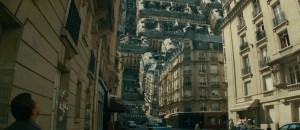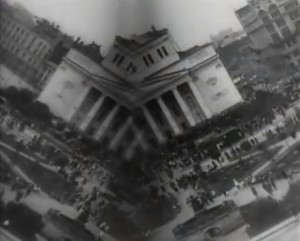Truffaut’s master tale of filmmaking is all at once a structurally well made film with excellent characters, a well directed adventure into filmmaking and a commentary on the art form all of us are choosing to pursue in our academics. For anyone passionate about film, this should be the kind of film that we are immediately drawn to. The language is crisp, effective, funny and well delivered by the actors. Does it feel dated? Of course – but that only adds to the beauty. With the main theme being is film more important than life, or, better yet, is film perfection and life imperfection? Personally, what Truffaut touches upon in his film is exactly why I (personally) find film so intriguing and why it is an art form I wish to challenge myself in. This is not a painting. This is not music. And this is not a book. Film is a collaborative process involving so many different voices, suits, and set-backs that it is a true mystery how we find ourselves watching the cinema that we do.
One element of the film I find fascinating is the character of Alphonse. I love the fact that in all of his free time, he tells his cast and crew that he is going to the movies. A man obsessed by cinema tries to live his life according to the code of film. It’s a code I find myself living quite frequently as well. I think many actors, writers and directors look at reality through the lens of a camera… with an audience watching them. They thrive on drama, try to create picturesque moments, and question their faith in life when things go ‘off script’ in real life (as we see with Alphonse being dumped). Rationally, filmmaking is a story telling form of art that audiences watch for a variety of reasons… but it is not reality. I write scripts and find myself constantly frustrated when my conversations in life don’t follow the language and flow I give my characters… But it is something we all must accept, no matter how much we love to get lost in the world of cinema.
This is a film made by a man obsessed with his art form. He even plays the fictional director in the movie! My favorite line so far is said by Ferrand to Alphonse, now lost in despair – “No one’s private life runs smoothly, that only happens in the movies.” We love movies… plain and simple. Our personal preferences will vary, but that’s what makes film perhaps the greatest art form ever. It takes so many different genres, tones, mediums and voices and stuffs them together into moving images that dare to dazzle us and transport us to a new world to forget about the one we are currently in. “I’d drop a guy for a film… but I’d never drop a film for a guy.” I’d say the same (about a woman) but the point is clear… This is what we love. And the process might be like going to war… but when the final product is something to be proud of, it sure feels like victory. This was the perfect film to start with – and to answer day one’s question about why we need to know film theory… It’s because we need to understand what film is, it’s essence, and it’s relation to our lives and how it shapes us. If you live and breathe film (like I know many in the class do), you need to ask “what is my reality compared with my cinema.”


